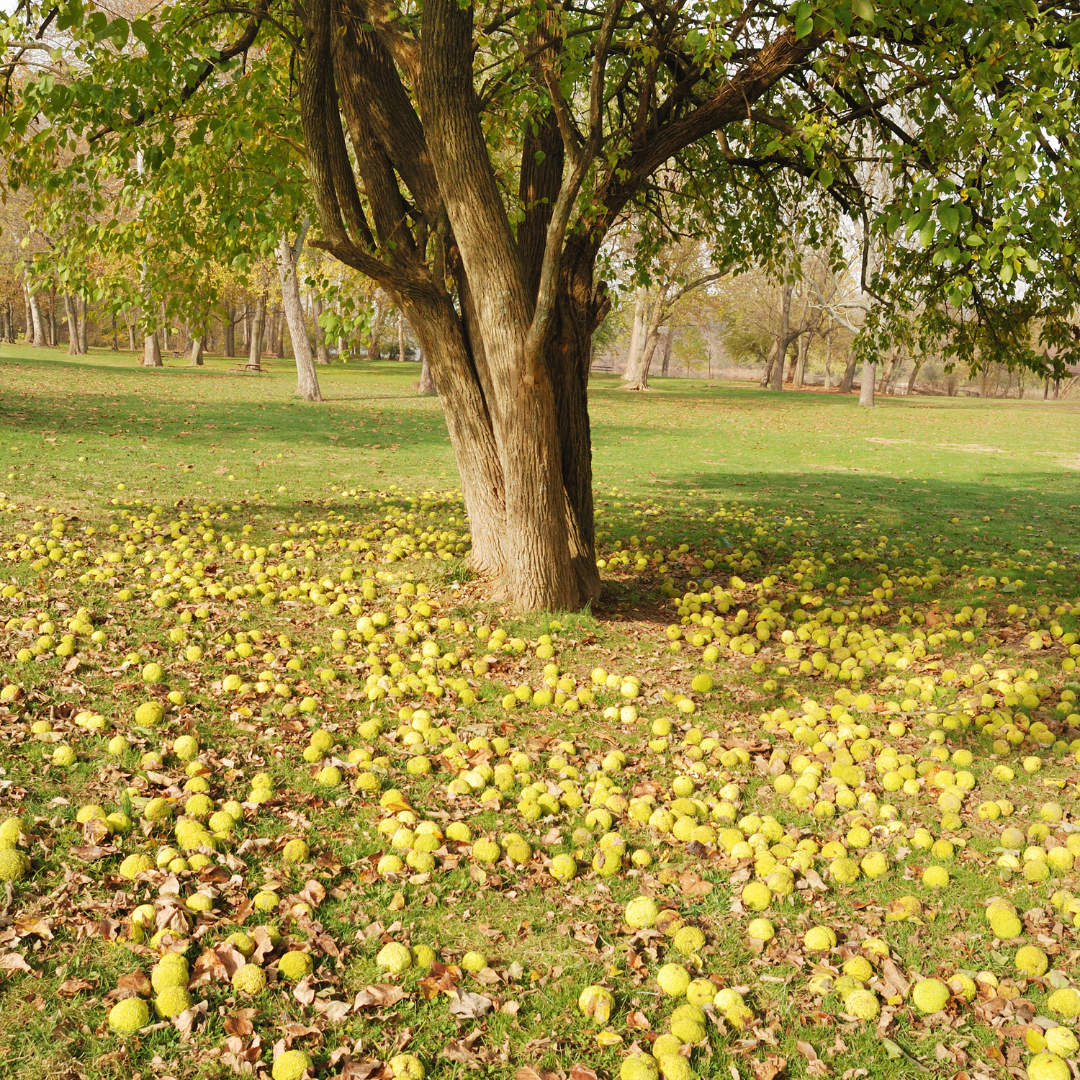Osage Orange Bareroot Tree
Osage Orange Bareroot Tree
Couldn't load pickup availability
The Osage orange tree, scientifically known as Maclura pomifera, stands as a testament to both nature's beauty and resilience. Native to the south-central United States, this distinct tree is recognized by its large, bumpy fruits, often termed "hedge apples," and its rugged, orange-brown bark. Historically, settlers and farmers planted rows of Osage orange as living fences or hedgerows, capitalizing on its dense growth and formidable thorns to contain livestock and mark property boundaries. These natural barriers not only provided effective containment but also added a windbreak and erosion control. It is also well-regarded for bow-making.
Scientific Name: Maclura pomifera
Hardiness Zones: 4-9
Alternative Names: Osage apple, hedge apple, horse apple, bois d'arc, bodark
Mature Size: Typically reaches heights of 30-40 ft. but can grow up to 60 ft. with a spread of 20-40 ft.
Growing Conditions:
- Origin: Native to the south-central United States.
- Transplanting: Transplants well when young.
- Sunlight: Prefers full sun.
- Soil: Adaptable to various soils but thrives in well-draining soil.
- Tolerance: Known for its drought resistance and ability to withstand harsh conditions.
Features:
- Fruit: Produces large, bumpy, green fruits often called "hedge apples" which are generally not consumed by humans due to their bitter taste but have been traditionally used for pest control.
- Bark: Rough and orange-brown, becoming deeply furrowed with age.
- Wood: Extremely hard and rot-resistant; historically used for making bows, hence one of its common names "bois d'arc," meaning "wood of the bow."
- Thorns: Young branches often have stout thorns.
- Uses: Apart from its historical use in bow-making, Osage orange wood is prized for fence posts because of its natural resistance to decay.
Wildlife Attraction:
While the fruits are not a primary food source for most wildlife, they can be consumed by some animals like squirrels when other food sources are scarce. The dense growth habit of the tree provides shelter and nesting opportunities for birds. The thorns offer some protection against predators, making it a refuge for smaller wildlife. Deer are also known to browse the twigs and leaves of young trees.
Non-GMO Commitment: At Growing Farmers and The Farm on Central, all our plants are guaranteed non-GMO and not genetically modified in any way, upholding natural breeding methods and promoting sustainable gardening and farming practices.
Conventionally grown
Plant is shipped as a 1-2 ft tall bare-root tree which establishes easily and is economical to ship.








